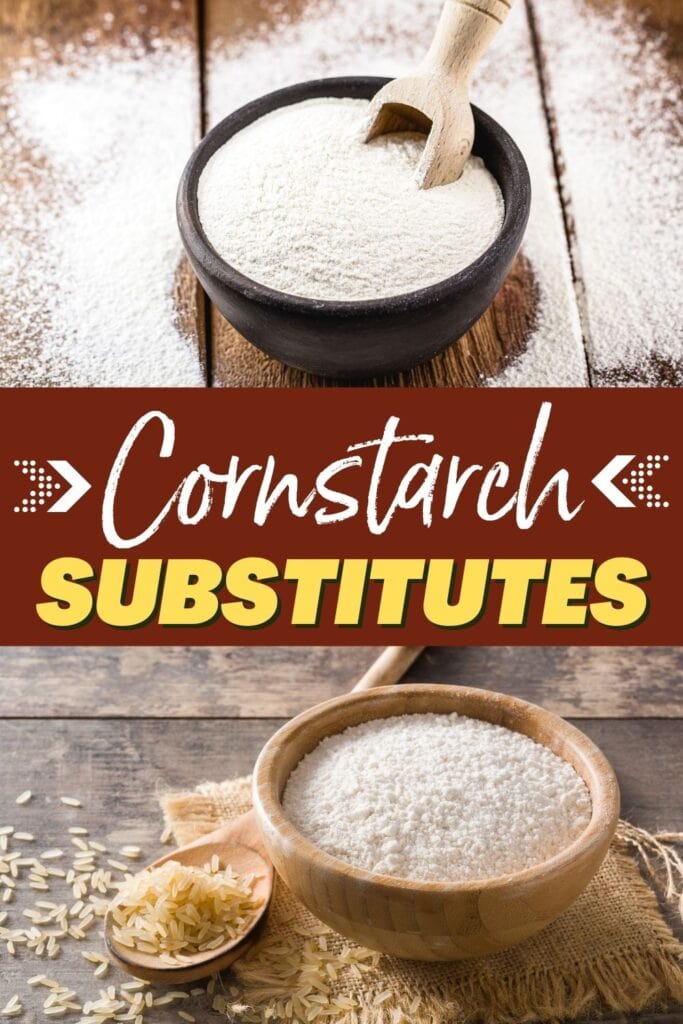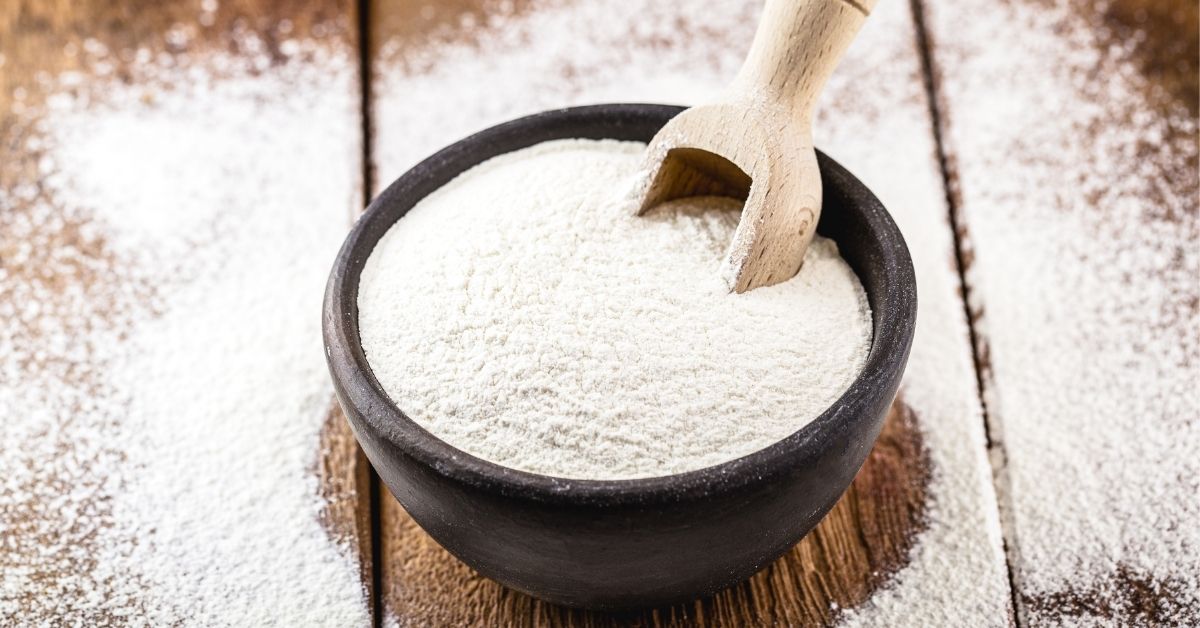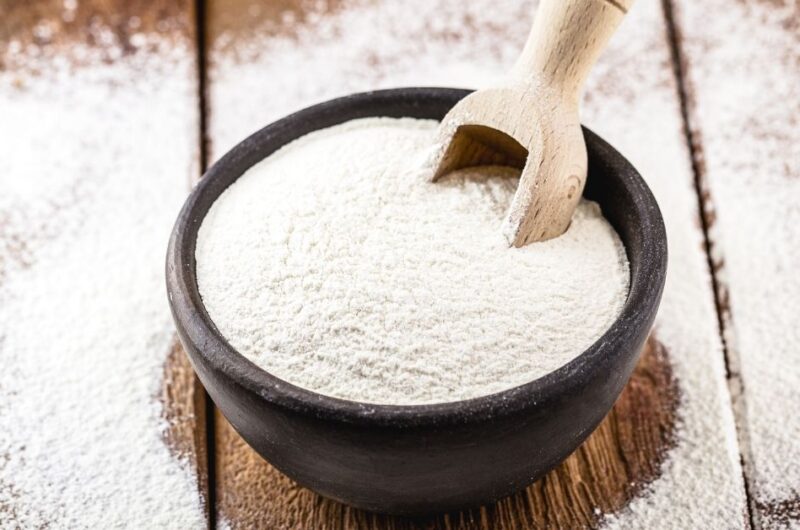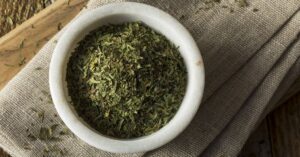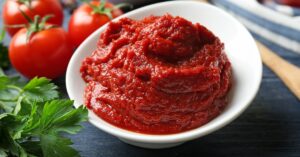It’s always handy to have these cornstarch substitutes on hand.
After all, the last thing you want is to run out right in the middle of cooking. How are you going to thicken that stew without it?
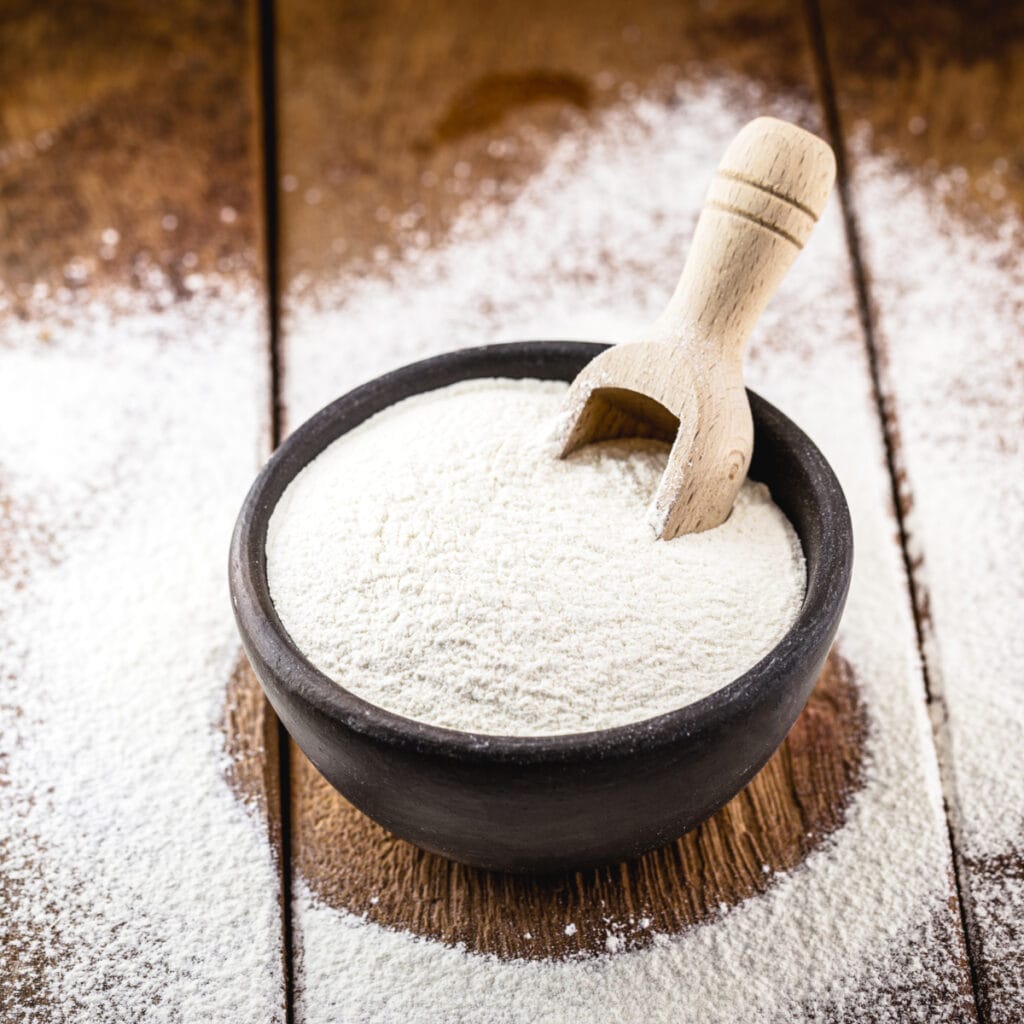
The good news is that there are plenty of alternatives to cornstarch, and most are readily available.
So, if you’re trying keto and need something low in carbs, or if you just forgot to get a new tub, this list has you covered.
From potato starch to tapioca, these popular cornstarch substitutes are here to save the day.
What is Cornstarch?
Most of us have used cornstarch in recipes at least once or twice. And I’m sure that most of us have used it a lot more than that!
But what exactly is it?
Cornstarch is a powdery starch made from ground corn kernels. It’s naturally gluten-free but heavy in carbs and often used to thicken sauces and stews.
It’s also used in baking to make cakes and cookies tender and to help puddings and custards set.
Alternatives include arrowroot and tapioca.
What is Cornstarch Used For?
Today, many people avoid cornstarch because it’s high in carbs and calories. But it’s a handy ingredient and not always simple to avoid.
Cornstarch is used primarily as a thickening agent. When heated, it’ll make sauces, creams, and other liquid/semi-liquid foods thicker.
This includes soups, puddings, and fruit curds.
It’s also helpful in ensuring fried foods are extra crispy and desserts are super tender.
Best Cornstarch Substitutes
The following ten ingredients are my picks for the best cornstarch substitutes. Some can be used in a 1-1 ratio, while others need measuring differently.
And not all of these alternatives can be used in every recipe.
Keep that in mind when choosing a cornstarch alternative.
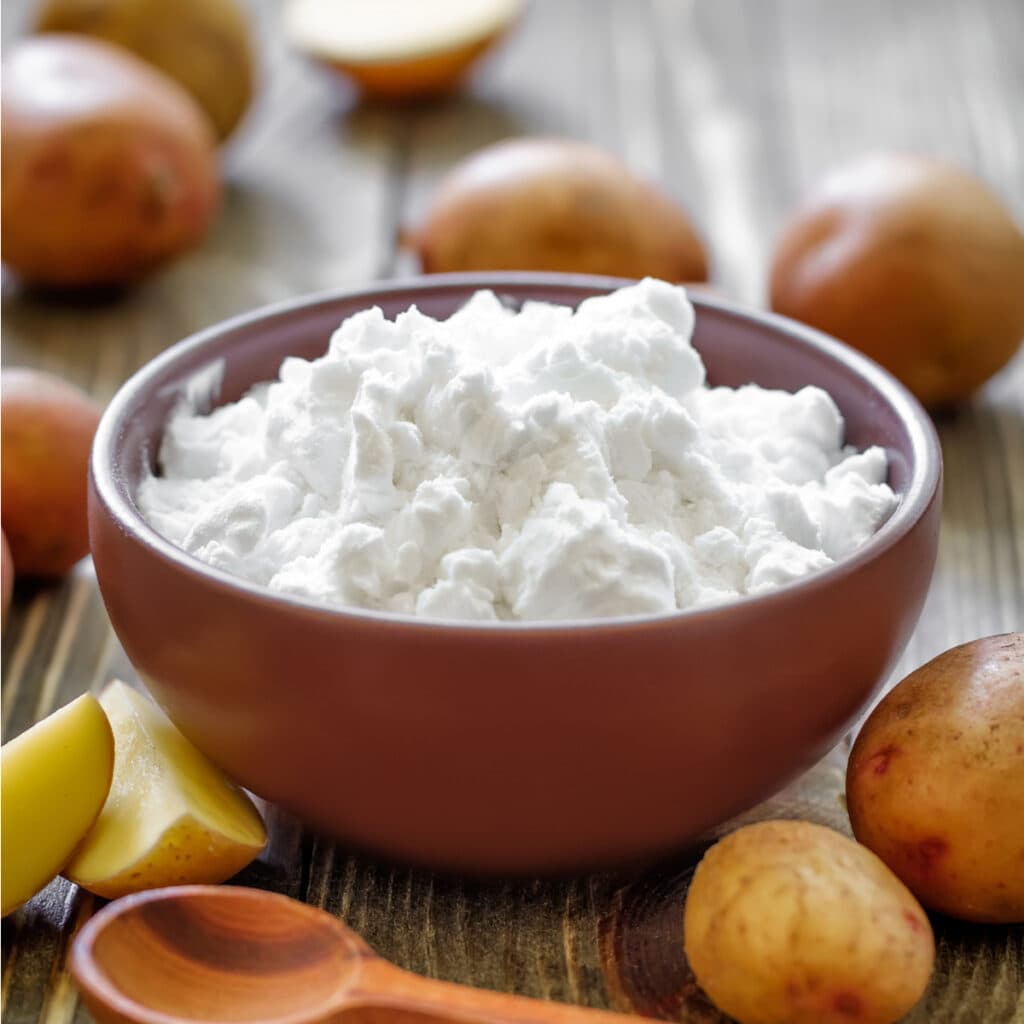
1. Potato Starch
Potato starch is my – and many chefs’ – top choice for a cornstarch substitute for a few reasons:
- It has a neutral taste, makes fried foods crispy, and tenderizes baked goods.
- It’s ideal as a thickening agent and works in the same way as cornstarch when mixed into a slurry (potato starch + water).
- Better yet, it’s flavorless, so it won’t change the overall taste of your dish.
You’ll use a one-to-one ratio, but be sure not to add potato starch too soon.
It thickens much faster than cornstarch, meaning it’s best to add right at the end of cooking.
Also, note that food made with potato starch doesn’t reheat well. So, use it for small meals when there aren’t likely to be leftovers.
How to Substitute: Use 1 tablespoon of potato starch for every 1 tablespoon of cornstarch.

2. All-Purpose Flour
Do you want to thicken a sauce or bread some chicken? If so, all-purpose flour is all you’ll need.
In fact, it’s probably most people’s go-to when they don’t have cornstarch.
But you should know the following before grabbing a bag from the pantry:
- The color and taste will vary depending on how much flour you use.
- Cornstarch leaves sauces shiny and translucent, whereas flour makes them opaque.
- Cornstarch makes fried foods super crisp, while flour can leave a thick crust.
I only recommend all-purpose flour for breading meats and in recipes that don’t call for a lot of cornstarch – less than 2-3 tablespoons.
Since all-purpose flour contains around half the thickening power of cornstarch, you’ll need twice as much flour. And that will affect the taste in larger amounts.
Also, when it comes to baking, you can’t use flour as an alternative.
Cornstarch tenderizes cakes and cookies, but if you add more flour, you’ll just make them dry and dense.
How to Substitute: Use 2 tablespoons of all-purpose flour for 1 tablespoon of cornstarch.
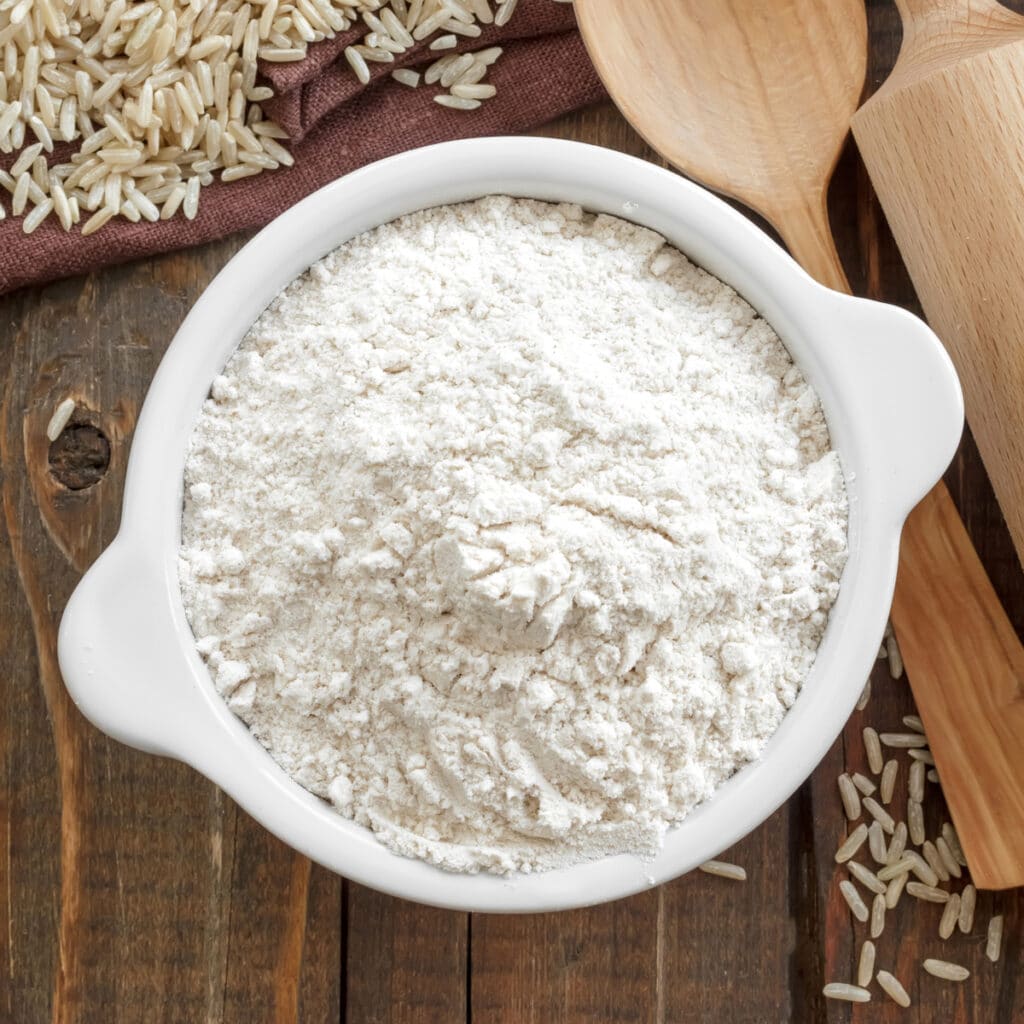
3. Rice Flour
Rice flour has the same two-to-one ratio as all-purpose flour.
But it’s a much better option for fried foods and in cookie recipes where cornstarch is used as a tenderizer.
That said, I don’t think it works as well in cakes or sauces.
Since you’ll need twice the amount, you may taste it in the final result. Plus, rice flour often turns gummy when heated, which isn’t pleasant in sauces.
Think mochi or boba.
Some people claim it works wonders in puddings and sauces. Perhaps I’m just using it wrong.
Either way, I’d stick to fried chicken and cookies for this one.
How to Substitute: Use 2 tablespoons of rice flour for 1 tablespoon of cornstarch.
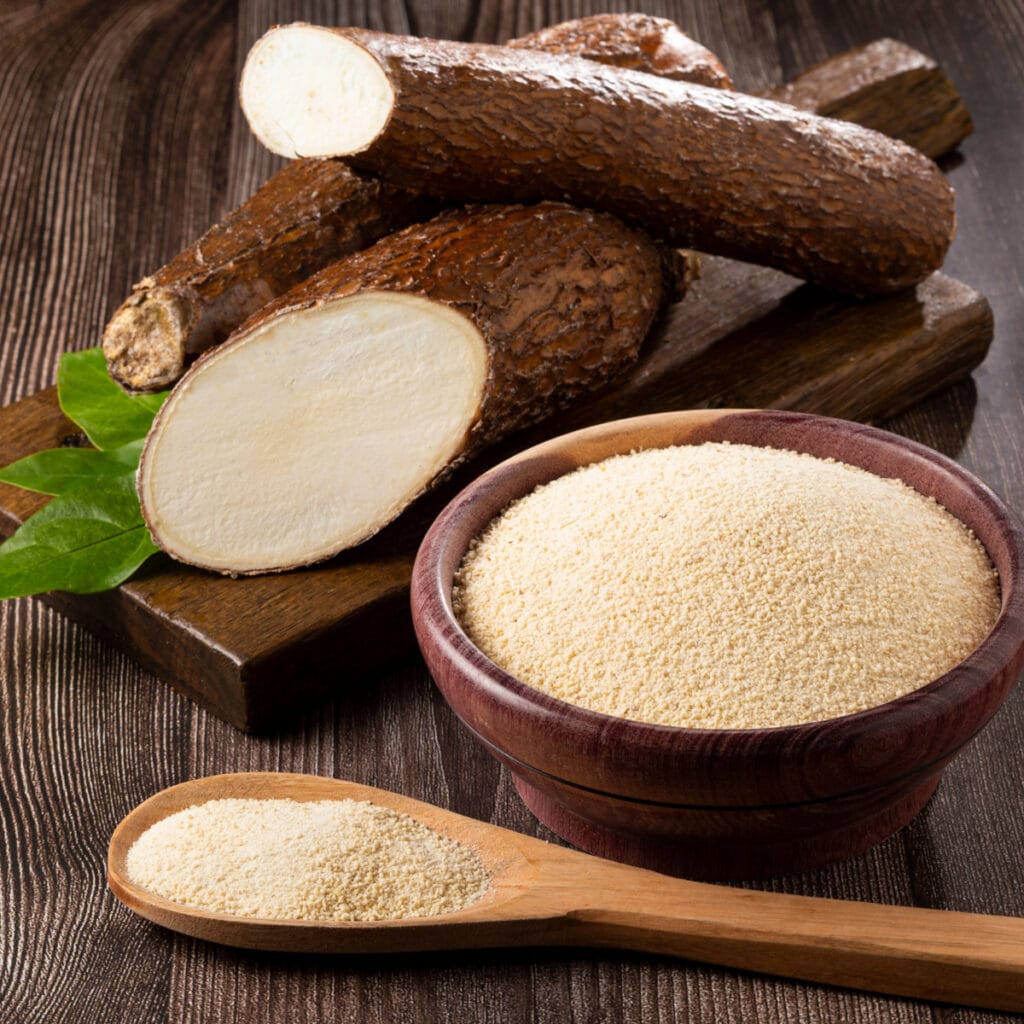
4. Cassava or Tapioca Flour
Most people call this ingredient tapioca flour. But it’s made by grinding cassava roots, then extracting and drying their starchy liquid.
No matter what you call it, this gluten-free alternative for cornstarch is an excellent option for desserts, pie/cobbler fillings, and sweet sauces.
Like rice flour, tapioca can become gummy (and even stringy) when heated too much. So it’s best to avoid using it in soups or cakes.
Instead, it will thicken pie fillings and sweet sauces when added right at the end, after the heat is off.
In fact, I often add it when the pie filling/sauce is finished and cooled slightly.
How to Substitute: Use 2 tablespoons of tapioca flour for 1 tablespoon of cornstarch.
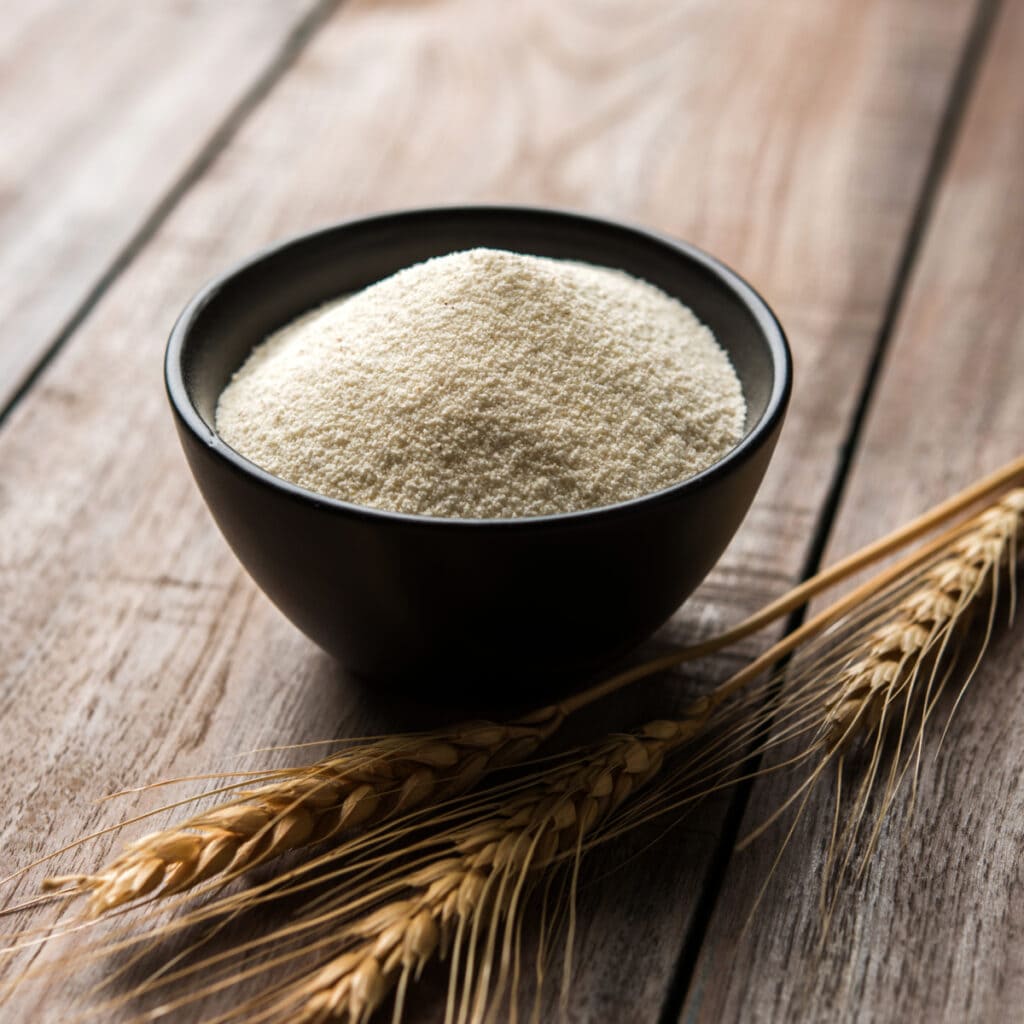
5. Wheat Flour
You get cornstarch, also known as cornflour, by grinding corn into powder. Wheat flour comes from the same process; only it uses wheat.
It’s another carb-heavy ingredient, but it does contain fiber and protein. (Cornstarch doesn’t have much of either.)
Unlike cornstarch, though, it’s not gluten-free.
You’ll also need to mix the flour with water to make a paste before using it. And the ratio isn’t as clear-cut as the ratio for all-purpose flour.
So, you’ll need to play around with it to get good results.
Also, like all-purpose flour, you can only really use it for fried foods and as a thickener. And even then, I don’t love its heavy finish on fried foods.
With that in mind, I’d stick to using it as a thickener in small amounts.
How to Substitute: Use 2 tablespoons of wheat flour for 1 tablespoon of cornstarch.

6. Psyllium Husk
Psyllium husk isn’t as well-known as wheat or all-purpose flour. However, it’s an excellent substitute for cornstarch if you need a low-carb thickening agent.
And I should stress this – it’s best used as a thickening agent.
Psyllium husk is a plant-based soluble fiber that turns into a gel when mixed with water.
So you can imagine the mess it would make of buttermilk fried chicken!
That said, you can use it for fried foods if you’re on keto. The trick is to pat as much moisture off the meat as possible. Then, fry it right away.
Some pros for psyllium husk include:
- The neutral flavor
- It won’t change the texture of your dish
- It has far fewer carbs than cornstarch
- It’s high in fiber
Just be sure to add it sparingly. There’s no cut-and-dry ratio for swapping the two out, so start small and add more as needed.
How to Substitute: Use 1/2 teaspoon of Psyllium husk for every 1 tablespoon of cornstarch.

7. Xanthan Gum
Xanthan gum is used in a ton of gluten-free recipes because it mimics the stretchiness of wheat flour.
That includes gluten-free cakes, cookies, muffins, bread, and more.
It’s also often used to make dairy-free recipes creamy and thick, such as ice cream or cheese sauce.
And finally, it’s a great thickener for soups, stews, and gravies.
There are, however, two key things to keep in mind:
- Xanthan gum is not as widely available as other cornstarch substitutes.
- It’s incredibly strong, so you only need a tiny amount.
In fact, you can thicken a whole pot of soup with less than a teaspoon of the stuff. So always start with a small amount and only add more as needed.
Also, like psyllium husk, it’s not the best choice for fried foods.
How to Substitute: 1/8 teaspoon of xanthan gum for every 1 cup of liquid in the recipe.

8. Arrowroot Powder
Substituting arrowroot powder for cornstarch happens at a one-to-one ratio. That’s as simple math as you can get.
So, whatever the recipe calls for, that’s what you’ll use.
Unfortunately, it doesn’t hold or reheat well. And it can actually thin out if you heat it too much.
With that in mind:
- Only add arrowroot to cooled (but not cold) soups or sauces as a thickener.
- Use it for smaller recipes that won’t have leftovers (or that won’t need reheating).
- It needs to be mixed with cold water before adding it to liquids.
I’ve seen a bunch of gluten-free and paleo recipes calling for arrowroot. But they often also call for another type of flour, such as coconut or almond.
I’ve never tried it, but it’s worth a try if you need gluten-free treats. And I have heard it makes super tender bakes.
But I do know it will work as a thickener without affecting the taste or texture.
How to Substitute: Use 1 tablespoon of arrowroot for every 1 tablespoon of cornstarch.
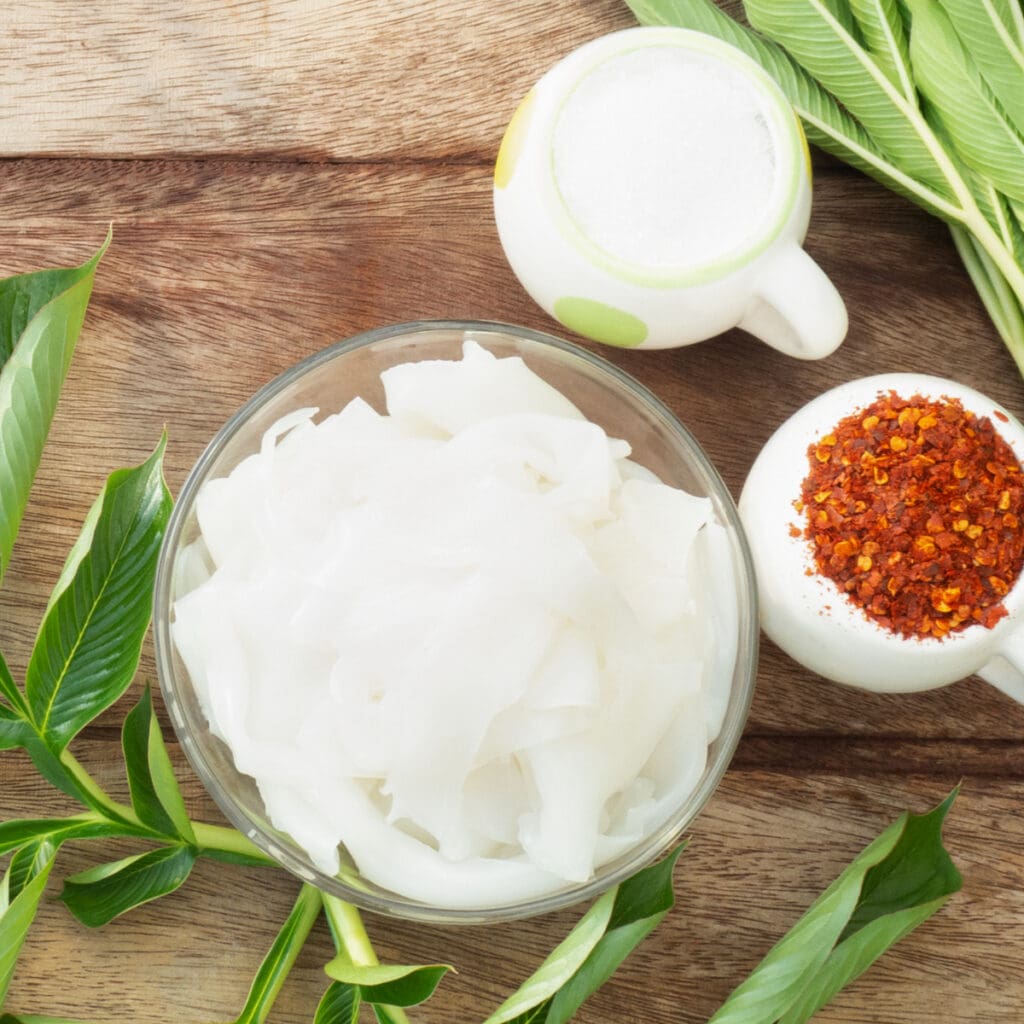
9. Glucomannan
If you’re on a low-calorie or low-carb diet, you need to check out glucomannan. It’s a plant-based soluble fiber with zero calories and carbs.
Additionally, it’s a probiotic, so it’s good for your gut. Some studies show that it may help lower bad cholesterol, as well.
It works best as a thickening agent, though you can use it for baking, too.
Unfortunately, it’s more gel-like than powder, so you can’t use it as a breading. (In other words, fried foods are out.)
It thickens fast and effectively, so use much less than you would if using cornstarch.
How to Substitute: Use 1/4 teaspoon of glucomannan for every 1 teaspoon of cornstarch.
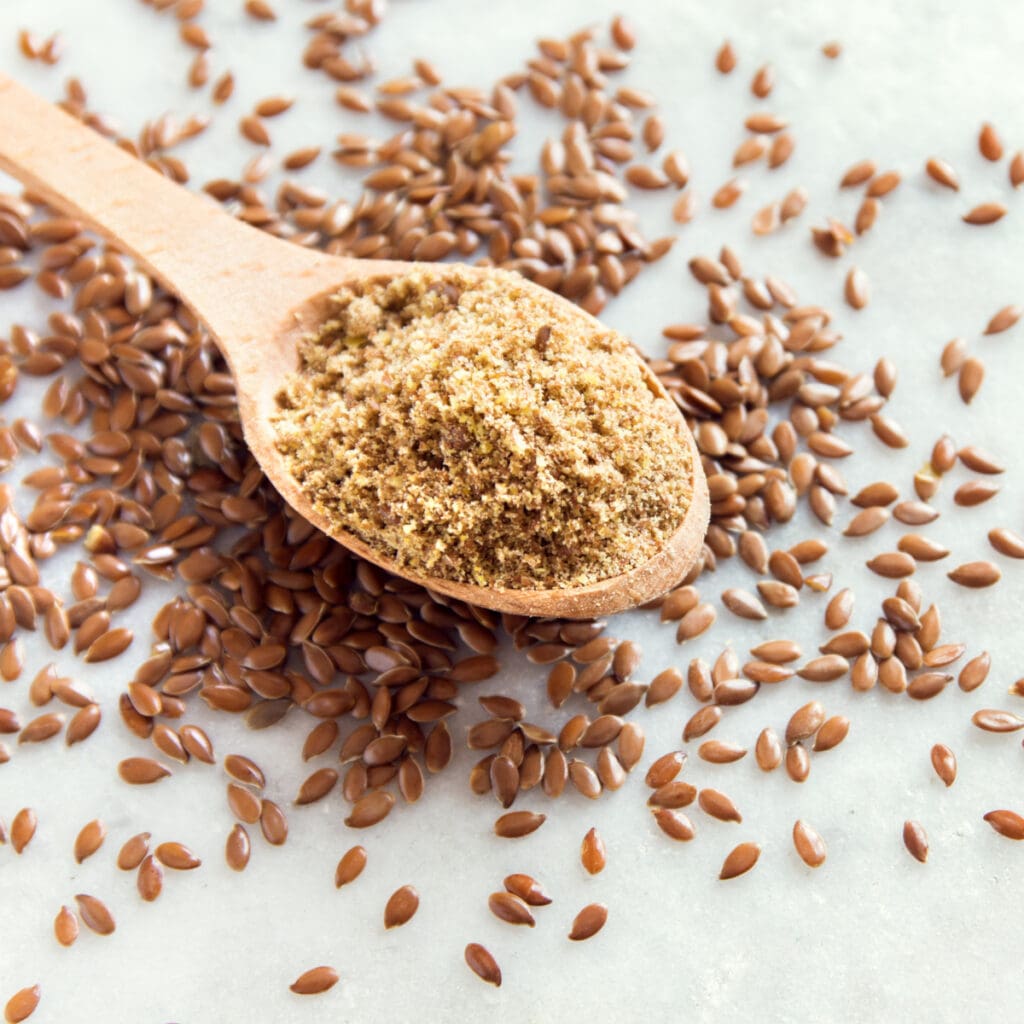
10. Ground Flaxseeds
Ground flaxseeds are often used as a vegan egg substitute as they’re very absorbent and form a jelly when you add water.
Because of this texture, they’re great for binding ingredients, like in cookie dough.
Unfortunately, ground flaxseeds can have a gritty texture, which you may notice in the final product.
But it does offer a boost of fiber that you don’t get from cornstarch. So that’s a win.
Of course, it’s your choice when and where to use them. But I don’t recommend using this in smooth sauces or delicate desserts.
As for using it in place of cornstarch, it works well as a thickener. However, you’ll need to add it a little at a time.
How to Substitute: Use 1 tablespoon of ground flaxseeds + 4 tablespoons of water for every 2 tablespoons of cornstarch.
